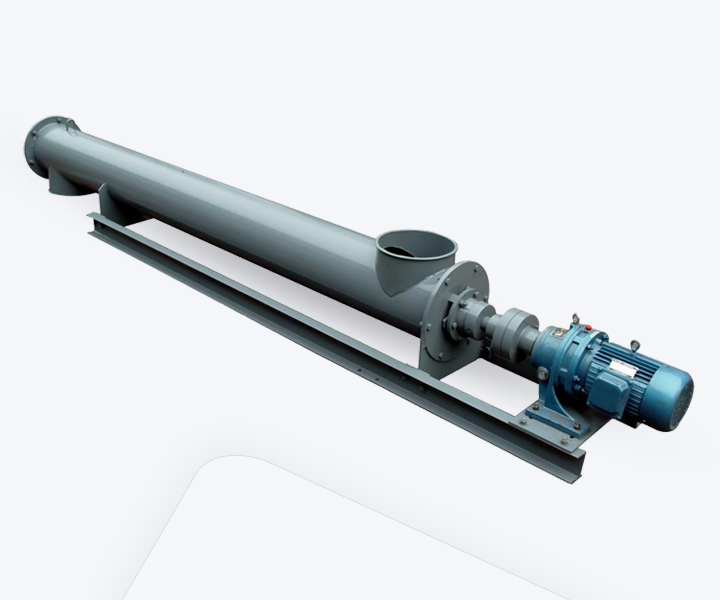As a new type of conveying equipment, screw conveyor is one of the most important in the modern production and transportation. It involves a wide range of industries, and it also effectively reduces the heavy manual labor and realizes the mechanization and automation of material transportation. There are many types of screw conveyors. How should users choose the screw conveyor equipment that suits their needs? We will introduce you to the following, I hope I can help you.

The conveying capacity of the screw conveyor refers to the amount of material conveyed per unit time. When transporting bulk materials, it is calculated as the mass or volume of material transported per hour; when transporting a piece of goods, it is calculated as the number of pieces delivered per hour. The conveying capacity of the screw conveyor is affected by many aspects. What are the factors that affect the conveying capacity of the screw conveyor? There is a detailed explanation in the article, the user can refer to it. Therefore, before the purchase, it is necessary to have a general understanding of the conveying capacity of the screw conveyor, so as to rationally design the model of the conveyor.
The conveying speed of the screw conveyor can be converted into conveying capacity, and the faster the speed of the screw conveyor, the better the conveying effect. However, the conveying speed of the screw conveyor should be combined with the design of the equipment itself.
If the conveying speed of the screw conveyor is too slow, the conveying amount is reduced and the conveying requirement is not reached. However, the conveying speed is too fast, exceeding the speed standard of the equipment itself. The material will be thrown outward due to excessive centrifugal force during the conveying process, so that the conveying cannot be carried out, the conveying efficiency is reduced, the energy consumption is large, and the wear of the equipment is accelerated.

The screw conveyor can be designed to be vertical, horizontal and inclined according to the requirements of the user. The conveying inclination directly affects the total resistance of the conveyor and the required power. The conveying capacity of the screw conveyor is the inclination of the conveyor. Increase and gradually decrease, so these conditions of use should be stated in the selection.
Under normal circumstances, when conveying powdery, granular or small block materials horizontally or obliquely, you can use ordinary screw conveyor (such as shaftless screw conveyor, etc.), and when conveying powdery and fine granular materials vertically. A vertical screw conveyor can be used.
There are various models of screw conveyors, and the conveying distances of different types of equipment are different, such as: horizontal screw conveyor conveying distance: ≤ 40 meters, vertical screw conveyor conveying distance: ≤ 20 meters. The conveying distance is also related to the selection of the screw conveyor motor. If the conveying distance is too large, it is necessary to increase the motor power and install a reducer.
The component dimensions of the conveyor include the pipe diameter (tube screw conveyor) or the width and depth of the tank, the size of the feed hopper, and the like. These component sizes directly affect the conveying capacity of the screw conveyor. Also consider the space of the user's site and the problem of placement, and choose the appropriate device size according to the size of the user's site.
The above is about the introduction of screw conveyor selection, if you want to know more, please click on the online consultation.
Address:China,Yanjin county forest park gate to the west 1000 meters north road.